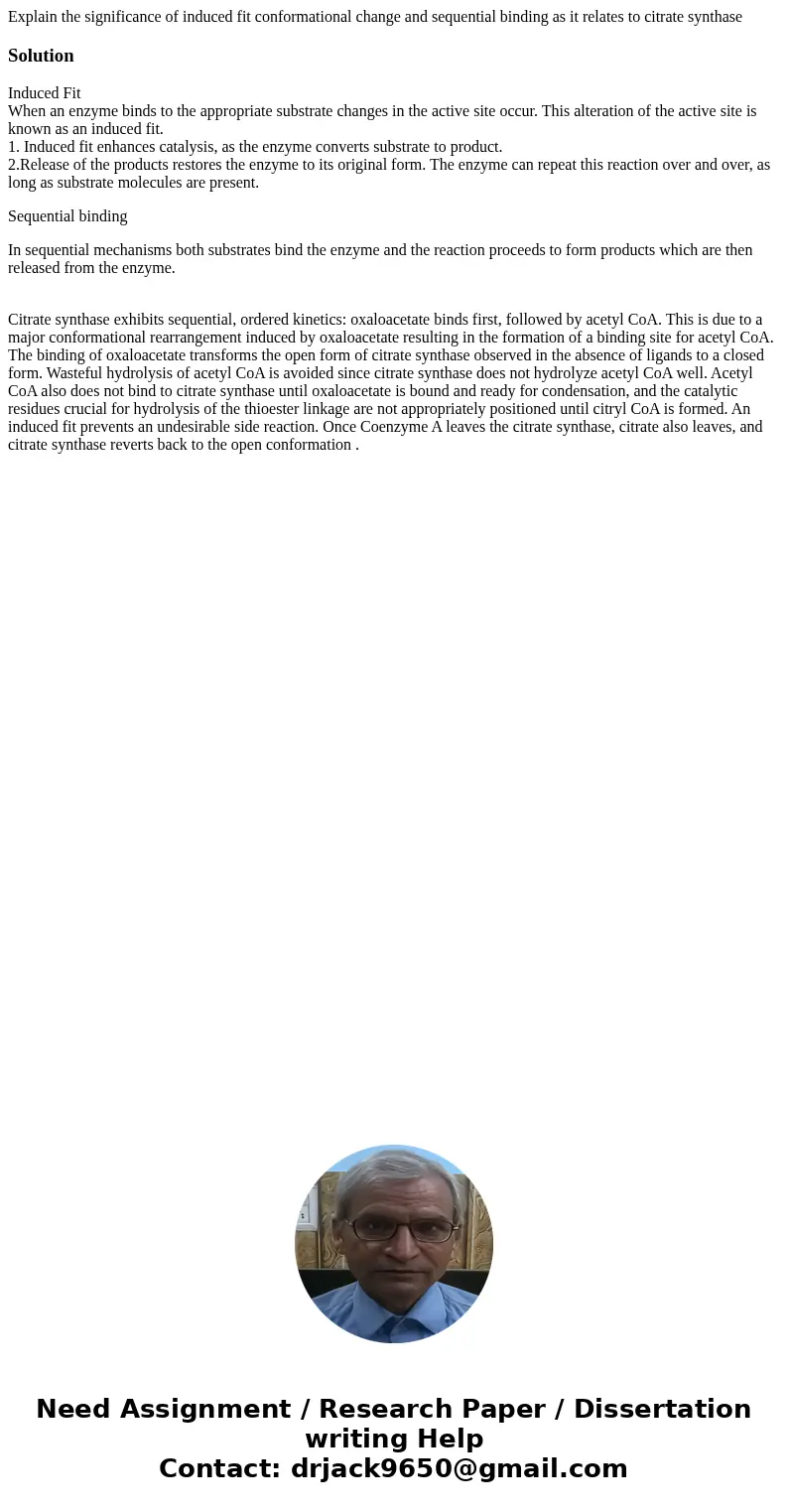Explain the significance of induced fit conformational chang
Explain the significance of induced fit conformational change and sequential binding as it relates to citrate synthase
Solution
Induced Fit
When an enzyme binds to the appropriate substrate changes in the active site occur. This alteration of the active site is known as an induced fit.
1. Induced fit enhances catalysis, as the enzyme converts substrate to product.
2.Release of the products restores the enzyme to its original form. The enzyme can repeat this reaction over and over, as long as substrate molecules are present.
Sequential binding
In sequential mechanisms both substrates bind the enzyme and the reaction proceeds to form products which are then released from the enzyme.
Citrate synthase exhibits sequential, ordered kinetics: oxaloacetate binds first, followed by acetyl CoA. This is due to a major conformational rearrangement induced by oxaloacetate resulting in the formation of a binding site for acetyl CoA. The binding of oxaloacetate transforms the open form of citrate synthase observed in the absence of ligands to a closed form. Wasteful hydrolysis of acetyl CoA is avoided since citrate synthase does not hydrolyze acetyl CoA well. Acetyl CoA also does not bind to citrate synthase until oxaloacetate is bound and ready for condensation, and the catalytic residues crucial for hydrolysis of the thioester linkage are not appropriately positioned until citryl CoA is formed. An induced fit prevents an undesirable side reaction. Once Coenzyme A leaves the citrate synthase, citrate also leaves, and citrate synthase reverts back to the open conformation .

 Homework Sourse
Homework Sourse